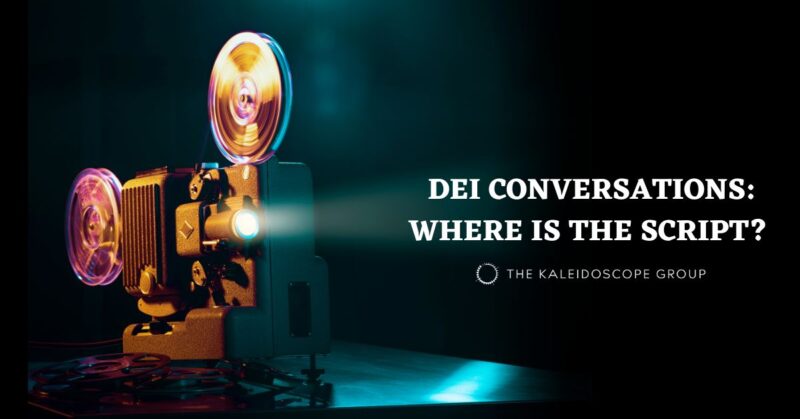Spotlight On: Mary Hunter, Senior Vice President, DEI Assessment Practice, The Kaleidoscope Group
May 31, 2023

Driving change with data-driven decisions . . .
Many companies are making major investments in diversity, equity, and inclusion (DEI) as a means of remaining competitive and driving greater growth and profitability. However, many are not sure where to start or how to evaluate their efforts. That’s when Mary Hunter, Senior Vice President of the Assessment Practice at The Kaleidoscope Group, and her team stepped in to provide much-needed guidance, tools, and recommendations to help measure organizational DEI programs.
A Non-Conventional Route
 Hunter arrived at her role at The Kaleidoscope Group following a rather non-conventional path. “If someone had told me I would be working in market research and data science years ago, I wouldn’t have believed them” she confessed. A native U.S. citizen, Hunter spent years abroad, primarily in Chile and Latin America given her fluency in Spanish. Living abroad and working in an environment where she was a cultural minority, gave her a real appreciation for the cultural differences among different populations—as well as their similarities.
Hunter arrived at her role at The Kaleidoscope Group following a rather non-conventional path. “If someone had told me I would be working in market research and data science years ago, I wouldn’t have believed them” she confessed. A native U.S. citizen, Hunter spent years abroad, primarily in Chile and Latin America given her fluency in Spanish. Living abroad and working in an environment where she was a cultural minority, gave her a real appreciation for the cultural differences among different populations—as well as their similarities.
Although she majored in art history with minors in Latin American studies and Spanish, then completed a masters in Arts Administration, after a few years in art museum management she found herself working in marketing research. For well over a decade, she worked at several global firms most prominently with TNS (acquired by global behemoth The Kantar Group in 2008) and GfK. Although she hadn’t planned on a career in that discipline, she soon found she had an affinity for it, with lots of help from mentors and coaches who patiently helped her develop a formidable skill set that changed her career path. “I was very much an outsider, in an insider space,” she says. “That helped me understand the importance of inclusion on some level because I needed help from colleagues and was lucky enough to receive it.” Subsequently, given her expertise in market research, Hunter grew more interested in the emerging field of DEI, which landed her in her role at The Kaleidoscope Group, where she’s been, happily, for the past seven years.
A Focused Approach
According to Hunter, The Kaleidoscope Group’s approach is laser-focused on using data to guide DEI actions that lead to measurable and positive organizational outcomes. We have to know our DEI vision first, that is, what we hope to achieve from our efforts. Then we need to assess where we’re at against that vision, to drive actions that get us to where we want to go.
Hunter says that in her experience too many clients try to find DEI insight in the wrong data. As an example, she’s seen an over-reliance on employee engagement surveys to evaluate DEI and guide action planning for DEI efforts. For a high-level temperature check, this may suffice, but for those who want a more in-depth diagnosis to drive DEI strategy and action planning, a different approach is needed.
“Engagement surveys are designed to track perceptions of a wide range of topics. They simply don’t include the right content to truly assess inclusion in the workplace,” she says. “It’s important to know what it is you need to measure to make better business decisions.” And since most organizations are struggling to determine the best data to measure workplace inclusion, she says many come to The Kaleidoscope Group to benefit from their framework.
Hunter and the Assessment Practice Team first seek to understand their client’s needs and priorities. This includes taking time to understand their business strategy, competitive advantage, key challenges, and, importantly, what they hope to achieve from DEI efforts. With this foundational learning, the right course of action for DEI assessment is recommended and may include an in-depth DEI survey, focus groups, interviews, workforce analytics, and/or a people practice reviews.
Once the data is collected, it’s important to ensure that it’s correctly analyzed and interpreted to ensure that it reveals insights that inspire action. This requires technical, DEI, and domain expertise, as insights are only meaningful when they connect relevant data to priority business issues that can be addressed through DEI actions. The final step is to tell the story of the data to leaders and other key stakeholders. “The important thing for everyone to remember is that relevant and reliable information must be the foundation of any good data story. And we use visualization and narrative to help communicate findings, not bias, or trick our audience. We stay true to the data,” says Hunter.
Where to Focus Your Attention
One of the greatest barriers perceived by clients when it comes to assessment is deciding where to shine their light on DEI. Assessing every possible area of a business is costly. And can lead to information overload, also known as ‘paralysis by analysis.’ “Companies don’t need to spend a small fortune on their DEI assessment,” says Hunter. “I always recommend clients select priority focus areas connected to their broader DEI vision and objectives.”
For example, if an organization is focused on succession planning to build a more diverse and inclusive leadership team, it might want to look at promotion rates, leadership training programs, and other workforce analytics to measure progress and outcomes to date. Such an assessment might reveal underperforming programs or initiatives that can be re-engineered or tweaked for better alignment with the overall strategic plan of the organization. Similarly, we might consider other metrics like onboarding, retention, and attrition, which can have significant costs that can adversely impact the bottom line. “At the end of the day, you’ll need relevant data to make those important decisions.”
How to Get Started
Adhering to Hunter’s advice, the starting point is determining what your vision for DEI is, to guide what you’re trying to measure, whether a single pain point or multiple ones. Then determine what data and metrics are needed to assess the current state against a desired future state that embraces and reflects your DEI priorities. With more than 30 years of industry leadership in DEI, Hunter and the team can help you evaluate your DEI strategy and progress. The important thing is to select the company best aligned with your business challenge or needs. The value proposition for third-party facilitation lends credibility and greatly mitigates any internal biases—both conscious and unconscious—for more objective analysis and outcomes.


